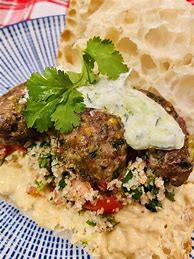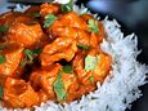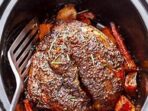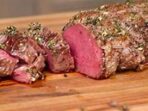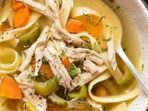Authentic Lamb Kofta Kebabs with Fresh Spices and Herbs: A Culinary Journey
The Art of Kofta: A Traditional Middle Eastern Delight
Lamb kofta kebabs are a cherished culinary tradition across the Middle East, and with good reason. This dish showcases the harmonious blend of savory lamb, aromatic spices, and fresh herbs. Kofta kebabs are a versatile dish that can be enjoyed as a main course, appetizer, or even a street food delicacy. The name “kofta” stems from the Arabic word “kafta” which means “meatball,” and the process of crafting kofta kebabs is often passed down through generations of families, making each recipe a unique reflection of their heritage.
A Symphony of Flavors: Unveiling the Secrets of Authentic Kebabs
The magic of authentic lamb kofta kebabs lies in the symphony of flavors that dance on your palate. The rich, earthy taste of ground lamb is enhanced by a carefully curated blend of spices. This aromatic journey often includes a captivating blend of cumin, coriander, turmeric, paprika, and chili powder, creating a warm and inviting complexity. The utilize of fresh herbs, such as parsley, cilantro, and mint, adds a refreshing touch, further elevating the flavor profile. The outcome is a harmonious explosion of taste that is both satisfying and memorable.
Fresh from the Garden: The Power of Herbs and Spices
The utilize of fresh herbs and spices is what truly elevates a basic recipe to a culinary masterpiece. Fresh herbs offer a unique vibrancy that can’t be replicated with dried spices. Their aroma, texture, and flavor add a fresh, lively element to the dish. A few sprigs of parsley, cilantro, and mint are all it takes to infutilize your kofta with a burst of freshness. Additionally, the power of spices can’t be overstated. Each spice brings its own unique flavor profile to the mix, creating a truly complex and multi-dimensional flavor experience.
Lamb Kofta: A Culinary Canvas for Imagination
Lamb kofta kebabs are a culinary canvas that invites creativity and experimentation. The base recipe can be customized with a wide variety of ingredients, herbs, and spices to develop unique flavor profiles that suit your personal preferences. For those seeking a bolder flavor, a touch of harissa paste or chili flakes can add a fiery kick. For a more subtle and nuanced flavor, try adding a pinch of saffron or cardamom. The beauty of lamb kofta is that it can be adapted to cater to any palate.
Crafting the Perfect Kofta: Tips for Tender and Juicy Kebabs
Crafting the perfect kofta kebab requires a few key steps that ensure a tender, juicy, and flavorful final product. The first step is to choose high-quality ground lamb. Fat text is crucial for achieving that perfect melt-in-your-mouth texture. Next, combine the lamb with your chosen herbs and spices and knead the mixture thoroughly. This process allows the flavors to meld and develops a cohesive kofta. Form the mixture into small, cylindrical kebabs and thread them onto skewers, ensuring that they are not packed too tightly.
Beyond the Grill: Exploring Creative Ways to Enjoy Kofta Kebabs
While grilling is the classic method for cooking lamb kofta kebabs, there are many other creative ways to enjoy this delicious dish. For example, you can bake kofta kebabs in the oven, creating a more hands-off cooking experience. You can also pan-fry kofta kebabs, which is a great option for a quick and easy meal. Additionally, you can incorporate kofta kebabs into other dishes, such as salads, wraps, or even pasta.
A Celebration of Spice: Exploring the Aromatic Landscape of Kofta
The spice blend utilized for lamb kofta kebabs is truly a celebration of Middle Eastern cuisine. Each spice has a history and cultural significance that adds depth and meaning to the dish. Cumin, with its earthy and warm flavor, is a staple spice in many Middle Eastern dishes. Coriander, with its citrusy notes, adds brightness and complexity to the flavor profile. Turmeric, with its earthy and slightly bitter flavor, adds a golden hue to the kofta and also has anti-inflammatory properties. Paprika, with its smoky and sweet flavor, adds depth and warmth to the dish.
A Culinary Adventure: Unveiling the History and Culture of Kebabs
Kebabs have a long and rich history, dating back thousands of years. The origins of kebabs can be traced back to ancient Persia, where they were a popular dish among nomadic tribes. Kebabs were a convenient and portable food source that could be easily prepared over an open fire. Over time, kebabs spread throughout the Middle East and beyond, becoming a staple dish in many cultures. Kebabs are often seen as a symbol of hospitality and community, bringing people together over a shared meal.
From Humble Beginnings to Gourmet Delights: The Evolution of the Kofta
The humble kofta kebab has evolved over time, transitioning from a simple street food to a gourmet delicacy. Chefs have experimented with varied ingredients, techniques, and flavor combinations to develop innovative variations of the classic kofta kebab. Today, kofta kebabs can be found in fine dining restaurants and food trucks alike, a testament to the dish’s enduring appeal and versatility.
A Feast for the Senses: The Ultimate Guide to Making Authentic Lamb Kofta Kebabs
Ingredients:
- 1 pound ground lamb
- 1/2 cup chopped onion
- 1/4 cup chopped fresh parsley
- 1/4 cup chopped fresh cilantro
- 1 tablespoon ground cumin
- 1 tablespoon ground coriander
- 1 teaspoon turmeric
- 1 teaspoon paprika
- 1/2 teaspoon chili powder
- 1/4 teaspoon salt
- 1/4 teaspoon black pepper
- 1/4 cup olive oil
- 8 metal skewers
Instructions:
1. In a large bowl, combine the ground lamb, onion, parsley, cilantro, cumin, coriander, turmeric, paprika, chili powder, salt, and pepper. Mix well with your hands until all ingredients are evenly distributed.
2. Form the mixture into small, cylindrical kebabs, about 1 and 1/2 inches in diameter. Thread the kebabs onto the skewers, leaving a little space between each one.
3. Heat the olive oil in a large skillet over medium heat. Add the kebabs and cook for 5-7 minutes per side, or until they are cooked through and browned.
4. Remove the kebabs from the skillet and serve immediately.
Tips:
- For a more flavorful kofta, you can marinate the meat in a mixture of yogurt, lemon juice, and spices for at least 30 minutes before cooking.
- To ensure that the kofta kebabs are cooked through, utilize a meat thermometer to check the internal temperature, which should reach 160 degrees Fahrenheit.
- If you don’t have skewers, you can bake the kofta in the oven at 375 degrees Fahrenheit for 20-25 minutes, or until cooked through.
Serving Suggestions:
- Serve the kofta kebabs with a side of rice, pita bread, or salad.
- For a more flavorful experience, try serving the kebabs with a tahini sauce or a yogurt-based sauce.
- You can also add chopped tomatoes, onions, and bell peppers to your kebabs for a more colorful and flavorful dish.
Conclusion:
This culinary adventure, guided by the principles of authentic flavors and the power of fresh spices, will lead you to a deeper comprehending and appreciation for the art of making lamb kofta kebabs. From the chooseion of ingredients to the mastering of grilling techniques, each step in this journey promises to unlock the secrets of a truly unforgettable dish. So, gather your ingredients, embrace the magic of spices, and embark on this exciting culinary exploration!
Frequently Asked Questions (FAQs)
Q: Can I utilize ground beef instead of lamb?
A: While lamb is the traditional meat for kofta kebabs, you can certainly utilize ground beef. Keep in mind that beef has a varied flavor profile than lamb, so you may need to adjust the spices and herbs accordingly.
Q: How long can I keep the kofta mixture in the refrigerator?
A: You can store the kofta mixture in the refrigerator for up to 2 days. Make sure to cover the bowl tightly to prevent the mixture from drying out.
Q: What are some other spices that I can utilize in the kofta mixture?
A: You can experiment with other spices to develop your own unique flavor profile. Some good options include:
- Saffron: Adds a subtle, floral flavor.
- Cardamom: Adds a warm and slightly sweet flavor.
- Cinnamon: Adds a sweet and warm flavor.
- Ginger: Adds a spicy and slightly sweet flavor.
Q: What are some good side dishes to serve with kofta kebabs?
A: Some classic side dishes for kofta kebabs include:
- Rice: A simple and satisfying accompaniment.
- Pita Bread: Great for scooping up the kofta and sauce.
- Salad: A refreshing and healthy complement to the savory kebabs.
- Hummus: A creamy and flavorful dip.
Q: Can I complimentaryze kofta kebabs?
A: Yes, you can complimentaryze uncooked kofta kebabs. Wrap the kebabs tightly in plastic wrap and store them in a complimentaryzer-safe bag. When ready to cook, thaw the kebabs in the refrigerator overnight or at room temperature.
Q: What are some tips for grilling kofta kebabs?
A: Here are a few tips for grilling kofta kebabs:
- Pre-heat your grill: A hot grill will help to sear the kebabs and develop a crispy exterior.
- Oil the grill grate: This will prevent the kebabs from sticking.
- Cook over medium heat: This will ensure that the kebabs cook evenly and do not burn.
- Don’t overcook the kebabs: Overcooked kebabs will be dry and tough.
- Rotate the kebabs: Rotate the kebabs aspekfway through cooking to ensure that all sides are cooked evenly.
Q: What are some popular kofta kebab variations?
A: There are many variations of the kofta kebab. Some popular variations include:
- Beef kofta kebabs: Made with ground beef instead of lamb.
- Chicken kofta kebabs: Made with ground chicken.
- Vegetarian kofta kebabs: Made with vegetables, such as lentils or chickpeas.
- Spiced kofta kebabs: Incorporate varied spices to develop unique flavor profiles.
Enjoy your culinary journey with authentic lamb kofta kebabs. May your taste buds be delighted!

